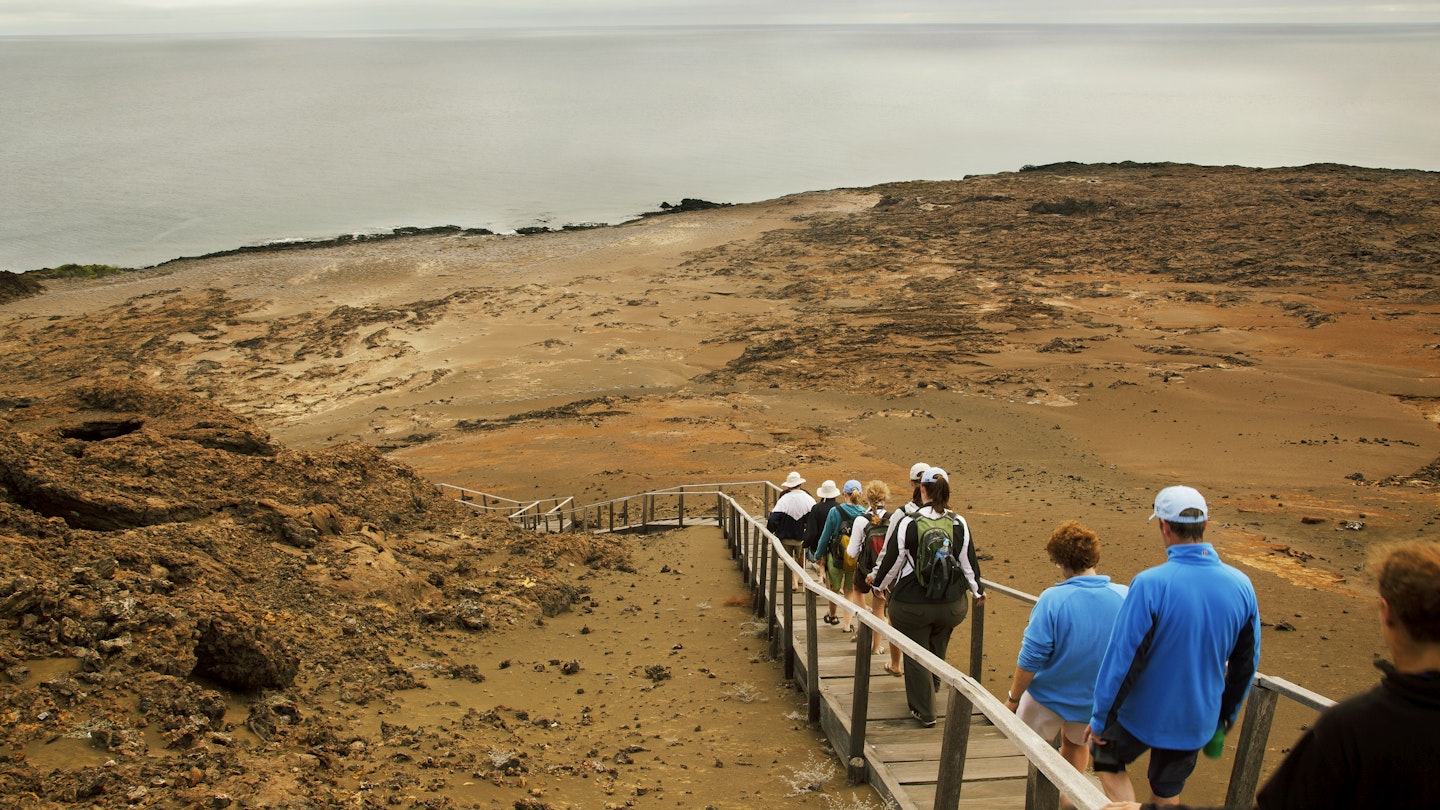Ecuador’s irregular topography and geographical richness are some of the top reasons travelers choose to visit this South American nation. However, when it comes to navigating around its territory, the same qualities pose challenges for visitors.
Thankfully, Ecuador’s straightforward road system, affordable gas prices, and budget-friendly overland transportation ease the hurdles of moving around the country.
Air Travel: Fast but Pricey
Traveling to Ecuador by plane is not nearly as cheap as flying to neighboring nations. The country’s taxes and high airfare fees can be a hindrance for everyone, particularly residents looking to fly domestically.
Regardless, flying remains one of the less time-consuming options to travel between the main cities—Quito, Guayaquil, and Cuenca—which otherwise takes up to 13 hours on the road.
Flying is also one of the few options to visit the Galápagos Islands. Cruises are available, but planes are by far the cheapest and most popular way of getting there.
Expect prices to fluctuate between US$150 to $250 for round-trip flights in mainland territory, and about twice that for trips to the Galápagos Islands. LATAM is a popular airline among locals for internal flights.
Buses: The Reliable Choice
A solid alternative to moving between cities and skipping planes is hopping on a bus. Much like in the rest of South America, buses are a preferred and reliable means of transportation for locals due to their extensive reach; most cities and towns have designated areas or central bus stations (terminal terrestre).
Ecuador’s manageable size keeps trips short and not overly taxing. Prices depend on the distance between destinations, but the longest rides—such as from Huaquillas on the border with Peru to Carchi on the border with Colombia—could last up to 15 hours and cost between US$25 and $30.
Shorter trips between neighboring towns and cities start at $3. If you’re on a budget, traveling long distances at night might help you save on accommodation.
Picking a bus company for your trip will depend on the available routes according to your departure and destination points. Explore options like Flota Imbabura (pet-friendly) and Transportes Occidentales, which offer routes across the country.
Research is essential as some bus units might not provide extensive amenities; however, WiFi, reclinable seats, and restrooms are becoming increasingly common.
Always keep an eye on your belongings and hide any valuables when traveling by bus. Keep important documents on hand in case the bus stops for military checkpoints.
Urban Transport: Affordable Options
In cities such as Quito and Guayaquil, bus rapid transit (BRT) systems like Trolebus and Metrovía offer organized alternatives as you tour urban centers. However, don’t expect the experience to be particularly comfortable during rush hours, as people often opt for BRT for its speed.
Quito’s new underground system, Metro de Quito, has become a time-saving choice for traversing the city. It takes about 34 minutes to cross from north to south, with stops at key points including Parque La Carolina, Universidad Central, and Plaza de San Francisco in the historic center.
Having a transportation card for the Metro will save you time, but you can ride the trains with cash (US$0.45 for a one-way ticket).
Cash is also necessary for paying on buses and most urban transportation systems, so remember to carry small bills. An exception is Cuenca’s modern tramway, which requires a card purchased at stops.
Renting a Car: Discover Ecuador at Your Own Pace
For those who value independence and flexibility, renting a car is a great option. Affordable petrol prices and relatively straightforward roads make this transportation choice appealing.
Car rental requirements can vary by company, but typically, a driving license and passport are sufficient for those over 25. Younger drivers may need to pay a deposit at some rental places.
Agencies like Avis, Europcar, and Goldcar can be found at major airports or transport hubs. If you plan on exploring Ecuador’s majestic landscapes, consider a 4WD vehicle, though it may be a bit pricier.
When on the road, be cautious of local driving habits, such as speeding and abrupt lane changes. Maintaining a defensive driving approach is crucial.
Always check weather updates, and consider carrying a physical map, especially if venturing into smaller towns where cell reception may be limited.
For safety, exercise caution when traveling on the coast, avoid isolated areas, and steer clear of main roads at nighttime if possible.
Taxis and Apps: Easy and Affordable Transportation
If you’re unsure about public transportation, taxis and ride-sharing apps like Uber provide an easy-to-use and cost-effective means of transport. As a safety measure, verify that the vehicles have a visible license plate.
When using an app, confirm that the license plate number matches the one listed online. Since March 2023, Uber users have an added safety feature: a 4-digit PIN code that the driver must confirm before starting the trip.
In major cities, taxis typically use a meter, so ensure the device is activated when you depart. In smaller towns, taxi fares generally remain inexpensive and should not exceed US$3, regardless of distance.
Accessibility: Transportation Challenges
Providing accessible transportation continues to be a challenge in Ecuador, as wheelchair-friendly options are limited to specific public transportation systems like BRT and the Metro in Quito.
Most urban transportation companies operate with step-entrance buses, making wheelchair access difficult. However, some interregional companies may offer assistance upon request.
The best option for travelers with disabilities is to arrange accessible tours with specialized companies that focus on creating inclusive travel experiences.





